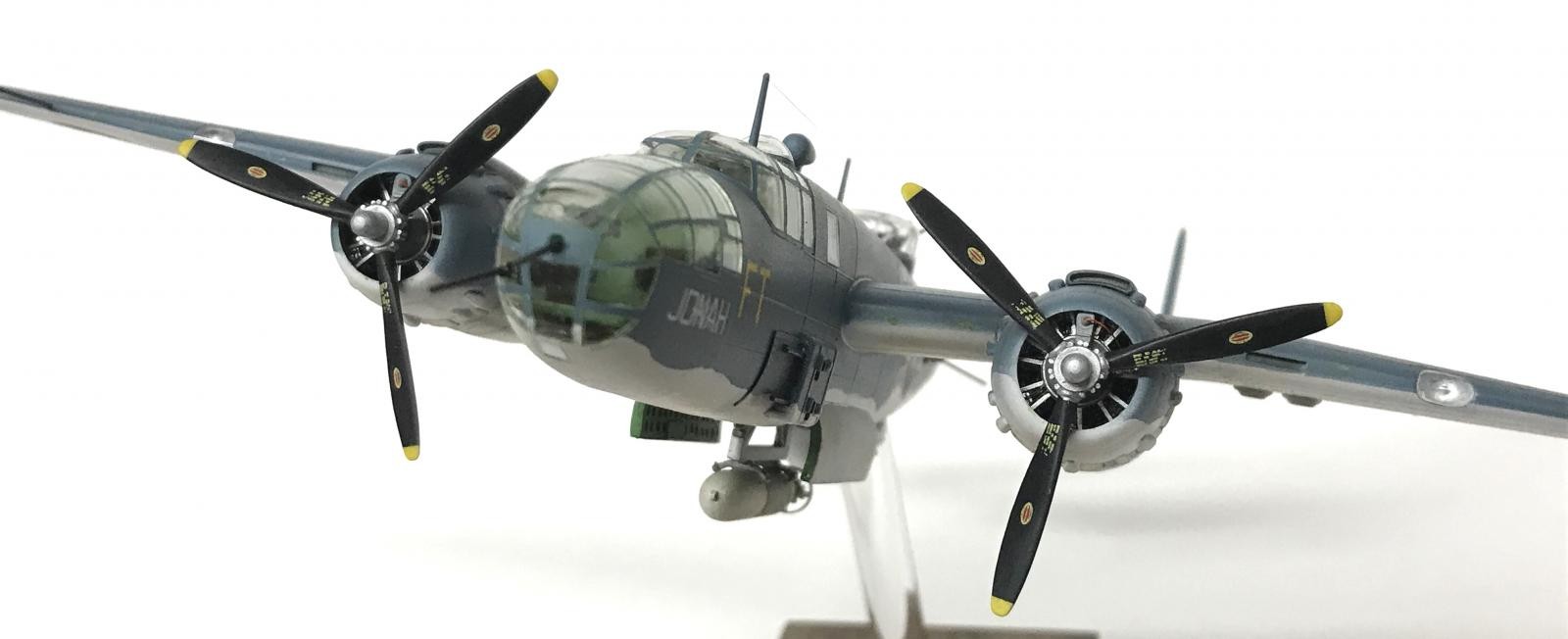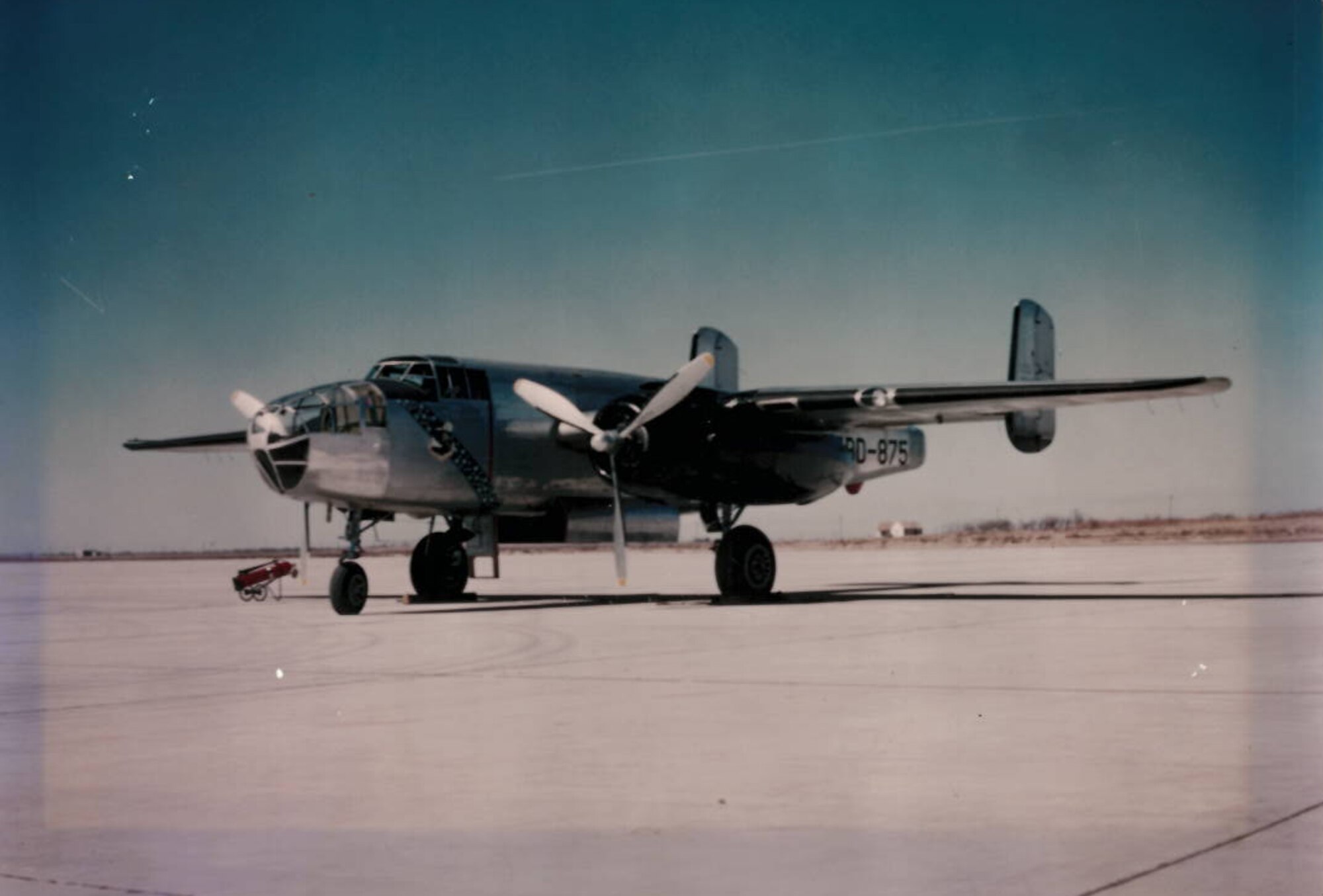Pbj Aircraft - Although the PBJ-1H was only equipped with a single set of controls, all of VMB-613's aircraft carried two qualified naval aviators (pilot and co-pilot), with the copilot's primary duties being the operation of the radar gun sight
and assisting the pilot. Additionally, the pilot and co-pilot would often switch seats in flight in order to reduce fatigue and maintain the co-pilot's effectiveness in flying the aircraft. The The navigator sat in a station behind the pilot and copilot, and had the
Pbj Aircraft

additional duty of loading the 75mm cannon. Two radio-gunners, whose primary duties were to operate and monitor the search radar and communications equipment, manned single flexible mounted machine guns in the waist positions. Completing the crew, a mechanic-turret gunner
About Our Aircraft Comparison Tool
manned the top turret, while in the rear, an armorer-turret gunner operated the machine guns in a power-operated tail turret. General Characteristics: The North American PBJ-1H medium bomber airplane was a mid-wing land-based monoplane Powered by two Wright Cyclone engines.
Characteristic features include a tricycle landing gear, and a double fin and rudder empennage. In addition to carrying up to fourteen .50 caliber machine guns and a 75mm cannon, the PBJ-1H was also equipped to carry

bombs, depth charges, 5-inch rockets, or an aerial torpedo. The PBJ Aircraft comparison tool offers the ability to compare over 300 aircraft types side by side the option to print using a printer friendly version. The number of aircraft and the amount of data per
aircraft are most comprehensive to give you a deeper understanding of how the respective aircraft compare to one another. This tool and information can be useful to private jet fliers, aircraft owners, corporations, aviation students and more.
Paramount Business Jets (PBJ) acts as Agent for Client in the marketplace and does not operate or own aircraft. All flights are carried out by FAA and DOT or equivalent foreign authority approved aircraft operators. Full disclaimer.
Marine Bombing Squadron Six-Thirteen's operational strength while serving in the Pacific consisted of 15 PBJ-1H aircraft. Prior to deploying, VMB-613 used various models of the PBJ. A brief description of the squadron's use of each model is provided below.
Further details on each model, including technical drawings and photographs can be found at: http://www.pbjmitchell.com The first PBJs assigned to VMB-613 were PBJ-1Cs, the naval equivalent of the U.S. Army Air Force's (USAAF) B-25C. They were equipped with dual controls, and had their underside turret
removed and a radome housing AN/APS-2 ("George") search radar installed in its place. PBJ-1Cs operated by VMB-613 were armed with five .50 caliber machine guns, one in the nose in a flexible mount, two fixed .50 caliber machine mounted on the starboard side of the nose firing
through holes cut into the side of the Plexiglas glazing, and two in a power operated turret in the rear mid-section. The North American B-25 Mitchell is an American twin-engine, medium bomber manufactured by North American Aviation (NAA).
It was named in honor of Major General William "Billy" Mitchell, a pioneer of U.S. military aviation. Used by many Allied air forces, the B-25 served in every theater of World War II and after the war ended many remained in service, operating across four decades.

Produced in numerous variants, nearly 10,000 Mitchells rolled from NAA factories.[1] These included a few limited models, such as the United States Marine Corps' PBJ-1 patrol bomber and the United States Army Air Forces' F-10 reconnaissance aircraft and AT-24 trainers.
Marine Bombing Squadron Six-Thirteen also received a J-model PBJ at the end of July 1944, however its use was virtually nil as it was immediately flown to the Consolidated-Voltee Modification Center at Elizabeth City, North Carolina for radar installation and naval modifications and was
subsequently replaced with a PBJ-1H. To fulfill a requirement for an aircraft with longer range and hitting power than the single-engine aircraft they were currently using, 706 of the twin-engine Mitchell bombers were procured by the Navy for the U.S.
Marine Corps and designated PBJs. The Marines trained a total of 16 bombing squadrons (VMBs), all at MCAS Cherry Point, North Carolina. However, only seven Marine squadrons would eventually operate the PBJ in combat. These were VMB-413, VMB-423, VMB-433, VMB-443, VMB-611, VMB-612, and VMB-613.

The first squadron to take them into combat was VMB-413, attacking Rabaul in March 1944, while VMB-612 pioneered the use of radar directed night rocket attacks on shipping off Saipan. All of VMB-613's PBJ-1Hs were initially finished in the three-tone color scheme adopted
by the U.S. Navy in March of 1944�sea blue, intermediate sea blue, and white. An unusual feature of this color scheme was that the sea blue on the upper surfaces was carried over onto the leading edges.
of the lower surfaces of the wing and horizontal stabilizer. The Squadron number for each aircraft was stenciled in large white numbers within a dark-colored rectangular box below the aircraft's Bureau Number on the vertical stabilizer.
The purpose of this dark-colored rectangular box was simply to obliterate the original two-digit aircraft numbers used stateside while the squadron was training. In late January of 1944 the squadron received PBJ-1Ds. Most of these D-model PBJs were configured and armed the same as the

older C-models. However, a number of the squadron's PBJ-1Ds were modified with the addition of a manually-operated gunner's position in the tail similar to later model B-25s, and seven additional .50 caliber machine guns�one in the tail, one on each side
in the waist position, and four "package guns" (two on each side) below the pilot's compartment. VMB-613's use of this type of aircraft was short lived, for they were withdrawn in March and April 1944 to receive radar modifications, and were subsequently sent
into combat with replacement crews for the Marine Bomber Squadrons that preceded VMB-613's deployment overseas. By war's end, nearly 10,000 B-25's Mitchell's had been built utilizing two different production lines, one in Kansas and the other in California.
All branches of the U.S. military, as well as the air forces of most allies, flew the B-25 during World War II. Numerous variants were built and the airframe could be adapted to almost any mission required by the military.
Developed in parallel with the Martin B-26 Marauder, the North American B-25 Mitchell was designed to meet a January 1939 Army Air Corps requirement for a five-place medium bomber. In order to speed deliveries, and with a promising design at hand, the Army Air Corps ordered almost 200 of the aircraft 'off the drawing board', without first building and testing a prototype.
pbj aircraft wikipedia, b 25 mitchell bomber history, naval aircraft pbj, north american b 25 mitchell, b 25 pbj, pbj 1j mitchell bomber b 25, pbj mitchell, b 25 mitchell

0 Comments